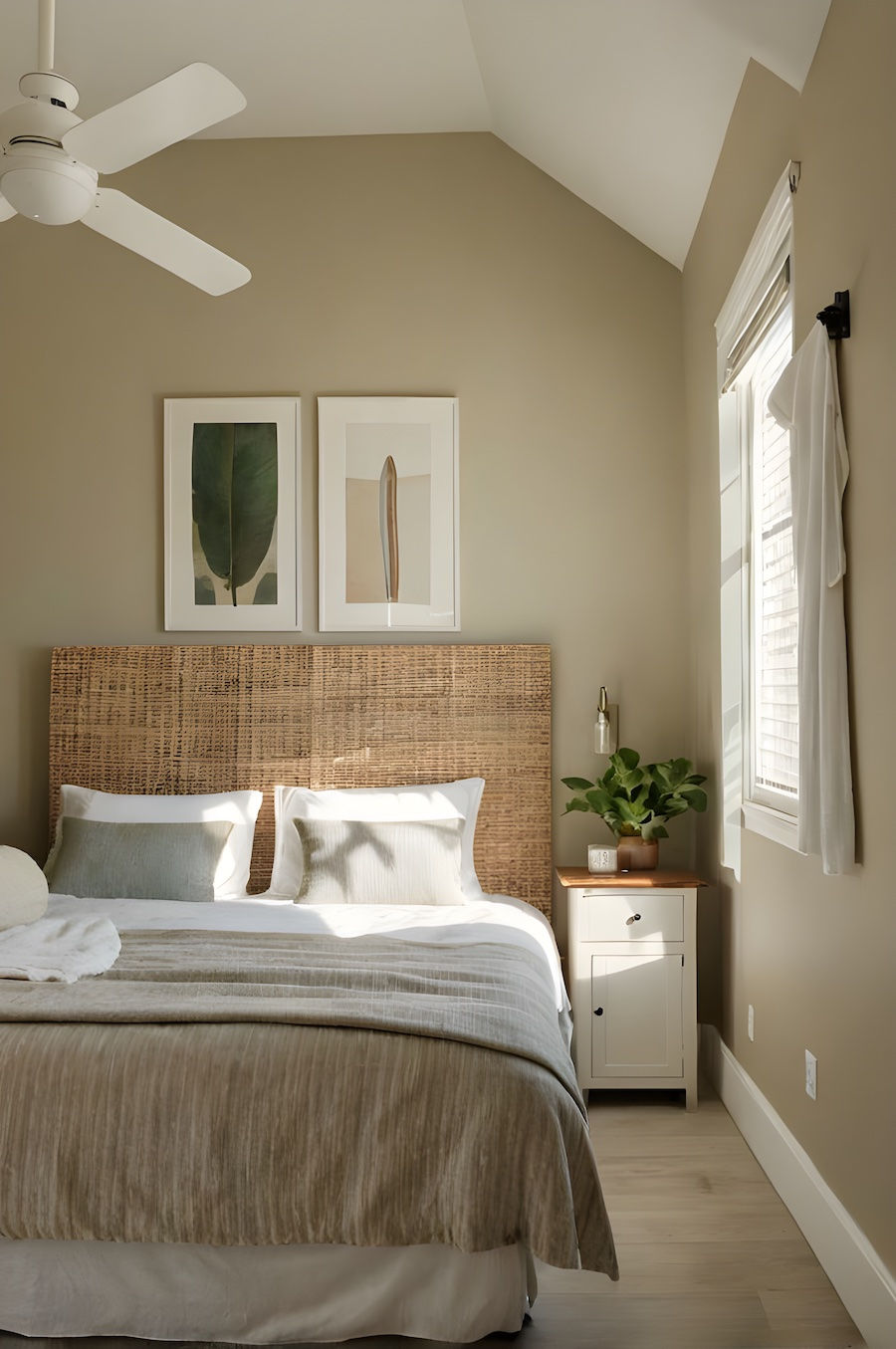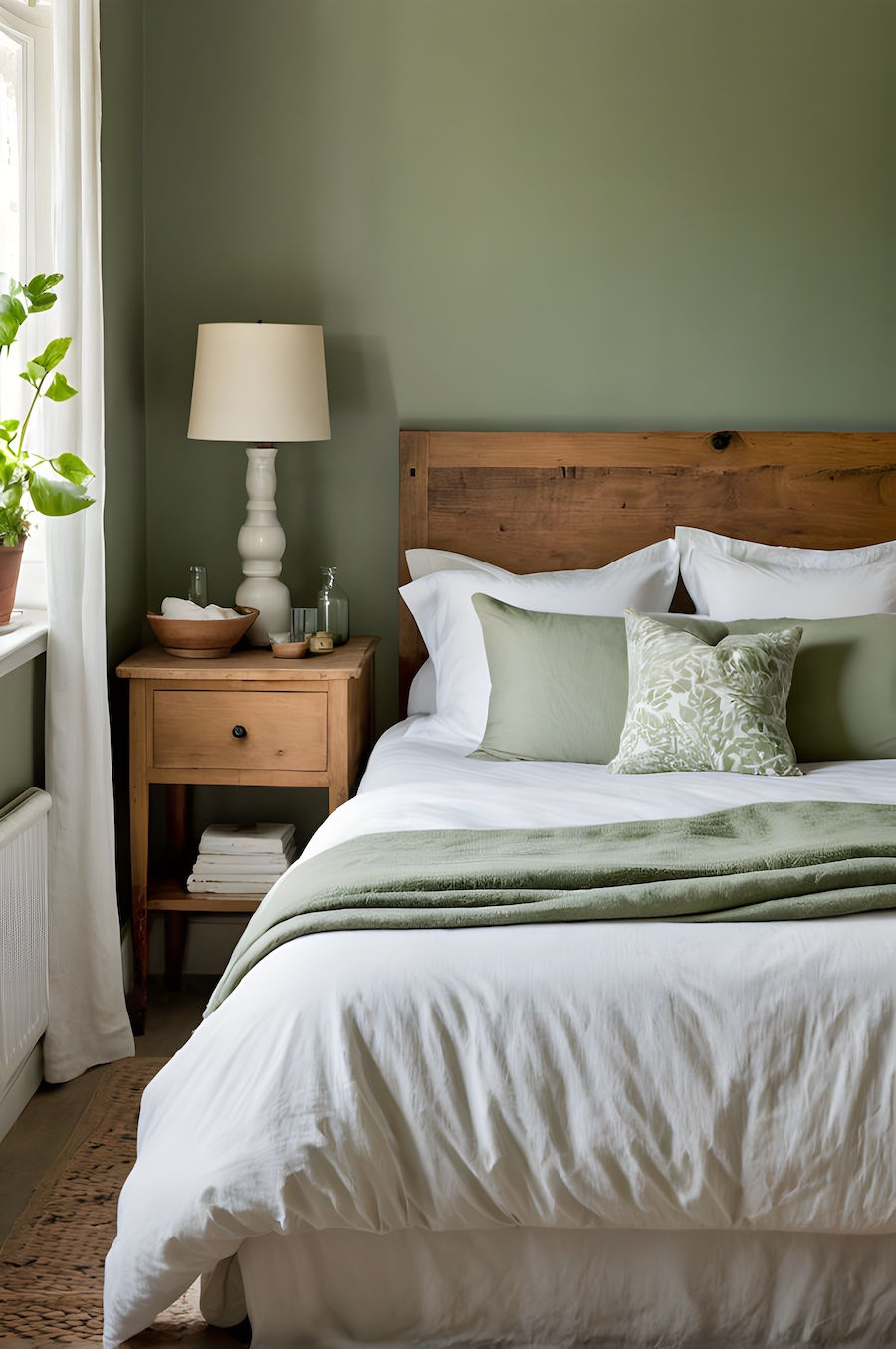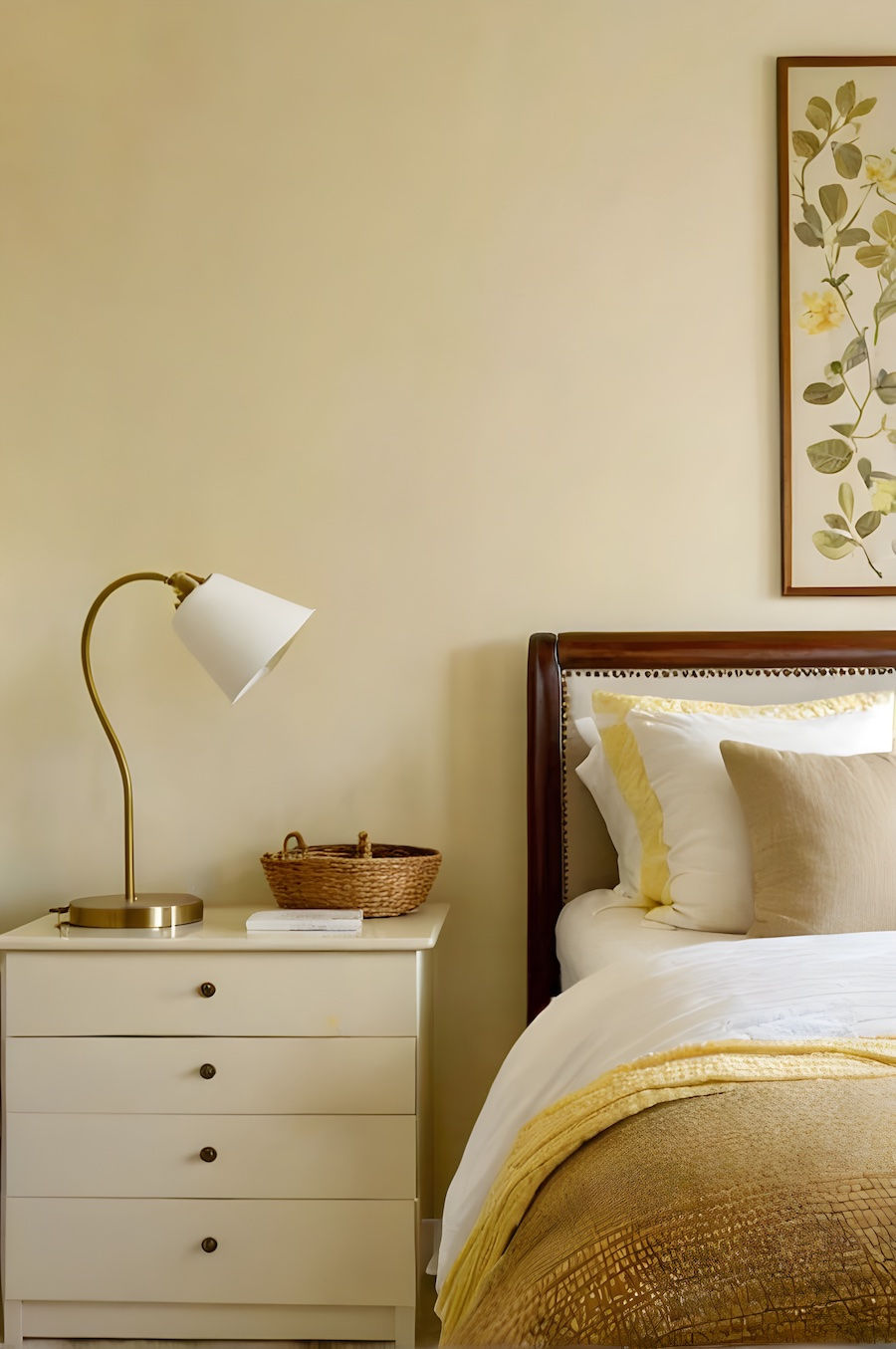6 Best Colours to Make Small Bedrooms Feel Bigger
- Lydia Flynn
- Jun 18, 2024
- 7 min read
Updated: Nov 5

Table of Contents:
Small bedrooms can be incredibly cosy, but they tend to present a few problems when it comes to choosing what colour to paint them. With the wrong colours, they can feel dark and tight, and it can be tricky to counteract this and make them appear as big and bright as possible.
In this post, we'll be exploring 6 of the best types of colours for making small bedrooms feel more spacious. Before we jump into the options, let's explore what else you should consider before choosing a colour for a small bedroom.
Related:
Considerations for Choosing Colors in Small Bedrooms
The best colour for a small bedroom shouldn't be chosen solely to make the room feel bigger. If a room feels spacious but sacrifices warmth or coherence then it may not be the best colour choice.
Before we explore some of the ideal colours for small bedrooms, let's look at a few factors that could impact your colour choices:
The style you’re trying to achieve: Colour has an enormous impact on aesthetics, so it’s important to consider what style you’re aiming for before you pick the colours in your small bedroom. For example, if you’re looking to create a maximalist style, you may want a more colourful room, whereas, if you prefer a minimalist aesthetic, you might lean more towards neutral shades.
Who's bedroom it is: Of course, you’ll want to decorate the bedroom so it caters to the person sleeping in it. For example, if you're decorating the bedroom for a young child, you might want to select more diverse colours or provide visual interest with wallpaper or murals. On the other hand, a guest room might benefit from a more neutral aesthetic so it can feel comfortable for a wide variety of people.
Level of natural light the room receives: The amount of natural light a room gets throughout the day can dramatically impact how certain colours look in it, and this is not only down to the quantity of light, but also the quality of it. For example, most west-facing rooms will receive light that is warmer in colour temperature, meaning these rooms are more forgiving to cooler colours, such as blue, while north-facing rooms receive the least amount of natural light and do better with warmer, paler shades. Check out our full guide on choosing room colour based on natural light here.
The desired effect: It's also important to consider what sort of atmosphere or effect you want the room to have. For example, if you're looking to create a cosy, relaxing ambience, you might prefer a darker, warmer shade. On the other hand, if you want the room to feel serene and uplifting, you might opt for a cooler, more uplifting, hue.
Avoid These Room-Shrinking Colors
Typically, these colours don't do much to make a room feel more spacious and could actually make your bedroom feel smaller:
Brilliant white: Bright, pure white can cause rooms to look stark, making shadows and corners more obvious, and detracting from the sense of spaciousness and comfort. Off-white shades tend to be less harsh and do better in small rooms.
Black: Dark shades can be great for small bedrooms, which we'll discuss more later. However, the same can't always be said for black. An entirely black room will absorb light, upsetting the sense of depth and making the room feel more enclosed.
Bright colours: While bold and beautiful, overly bright colours can be visually intense, making the space feel busy and overwhelming, and doing nothing to expand the sense of space. Avoid highly saturated colours such as bright reds, yellows and oranges, opting for more subtle, muted shades.
Colours with undertones that clash with your furnishings: If you choose a wall colour that clashes with your furniture, it can disrupt the room's harmony and the perception of space. For example, pairing a wall colour like cool white with warm-coloured furniture, such as orange, can create a disjointed feeling in the room.
6 Colours to Make Small Bedrooms Feel Bigger
While there's more to making a small bedroom feel larger than just choosing the right colour, certain colours can do wonders for expanding the sense of space.
We've curated a list of 6 types of colours to provide you with inspiration for selecting the ideal shade. We'll explore not only the right hue but also the appropriate shades and tones to ensure your small bedroom feels well-rounded and spacious.
1: Dark and Intense Shades

It's often believed that dark colours make rooms look small, dark and constricted. However, the opposite can be true.
Dark colours have an almost contradictory nature in small rooms because they can make the room look both bigger and cosier. They blur the boundaries of the room, making it appear wider and taller, especially when paired with light-coloured furniture.
Dark colours work great in small, south-facing bedrooms as the extra natural light will help to offset the darkness and elevate the aesthetic. Consider pairing a dark shade with the colour drenching technique to maximise the sense of space.
Dark colour ideas for small rooms:
Dark teal
Navy
Burgundy
Hunter green
Deep terracotta
2: Pale Neutrals

A versatile choice, pale neutrals can help bounce light around the room, making it appear bigger, meanwhile making a great backdrop for brightly coloured furniture and accessories.
Neutrals can help to balance west-facing bedrooms where the late afternoon/evening sunlight can be intense and warm.
Choose neutrals with undertones that coordinate with the colour of your furniture. For example, if you have green-toned furniture choose a complementary shade, such as Farrow & Ball's Bone, which is grey with an undertone of green.
Neutral colour ideas for small rooms:
Beige
Blush pink
Tan
Grey
Off-white
Cream
3: Muted Colours

As we mentioned earlier, when trying to make a room appear bigger it can be sensible to avoid overly bright shades as they can overwhelm the room, making it appear busy and cramped.
Muted shades, on the other hand, are easier on the eyes and reflect light around the room more softly, making them great for maximising the sense of space.
Subtle, muted colours do well in most rooms, but especially in south and west-facing rooms to offset the intense levels of natural light.
Muted colour ideas for small rooms:
Olive or sage green
Powder blue
Terracotta
Burnt orange
Khaki
Warm grey or greige (or a combination of grey and beige)
4: Warm vs Cool Colours for Small Bedrooms
Both warm and cool colours work for small bedrooms. Which option you choose depends more on the effect you want to create.
For example, if you want to create a serene and calming atmosphere, consider a cool, muted wall colour such as powder blue or sage green.
If you are looking to create a cosy and cocooning effect, consider warm colours such as blush pink or ochre.
Warm colour ideas for small bedrooms:
Blush pink
Ochre
Sand
Caramel
Cool colour ideas for small bedrooms:
Pewter
Lavender
Duck egg
Muted mint
5: Fresh Pastels

Pastel colours are typically pale, making them great for bouncing light and making your small bedroom appear larger.
Subtle pastel shades can also help to create a refreshing and uplifting atmosphere in your bedroom, possibly helping you to feel more energised first thing in the morning.
Pastel colours work beautifully in north-facing rooms which can feel cold and dingy due to a low level of natural light throughout the day.
Pastel colour ideas for small bedrooms:
Butter yellow
Lilac
Muted periwinkle blue
Pastel sage green
Peach
6: Browns

Brown is a wonderfully versatile colour with a wide range of shades and tones. Its natural, grounding properties make it ideal not only for small bedrooms but for any space, creating a peaceful and relaxing ambience.
As mentioned earlier, dark colours can paradoxically make small spaces feel larger, so opting for dark browns can achieve a cosy and expansive atmosphere - a win-win situation. On the other hand, light browns like mushroom brown or beige can reflect light, enhancing the perception of space while maintaining a cohesive and calming aesthetic.
Brown colour ideas for small bedrooms:
Taupe
Mushroom
Chocolate brown
Tan
Sienna
Related: The Psychology of Brown Interior Design: Bringing Comfort to Your Home with a Brown Aesthetic
Enhancing Space Perception Beyond Paint Color

Paint colour isn't the only thing that can make a small space appear bigger. Think outside the box and consider the following points when trying to achieve the illusion of more space.
Colour of Furniture
Pairing light-coloured furniture with dark wall colours can create the impression of more space, as the contrast enhances the perception of an enlarged area.
The same can be true vice versa - pairing dark-coloured furniture with light walls can achieve a similar effect, emphasising spaciousness through contrast.
While contrast can do a lot for making a small bedroom look bigger, the same can be said for pairing light-coloured furniture with light wall colours of similar colours. This creates a seamless and cohesive look, which can expand the perception of space.
One approach to avoid is pairing dark furniture with dark wall colours. This approach is great for creating a cosy and intimate atmosphere, but it will likely make the room feel smaller.
Painting Technique
How you paint the room also matters. For example, using techniques such as colour drenching (where you paint the entire room one hue, including walls, ceilings, trim and doors), can create a seamless effect, making the room feel uninterrupted and more expansive.
When it comes to trying to make a small bedroom look bigger, it can be easy to get caught up in finding the perfect colour for your walls, but it's important to consider your preferences, how natural light affects the room in question and the effect you're trying to create. Above all, choose an evergreen colour you know you won't get tired of after a few months and complements your furniture and decoration.
Disclaimer: Your invaluable support through affiliate links allows us to sustain our mission of continuously inspiring and guiding you on your enriching home decor journey. It aids us in providing valuable insights, recommendations, and resources, ensuring that we can consistently offer quality content and advice to elevate your home's aesthetic and comfort.










That's a fantastic post! For those ready to turn inspiration into action, professional home improvement services — whether it's a full kitchen renovation, a quick bathroom refresh, home interior design crucial electrical upgrades, or reliable plumbing repairs — can truly make a difference in achieving both quality and efficiency for any project, big or small.